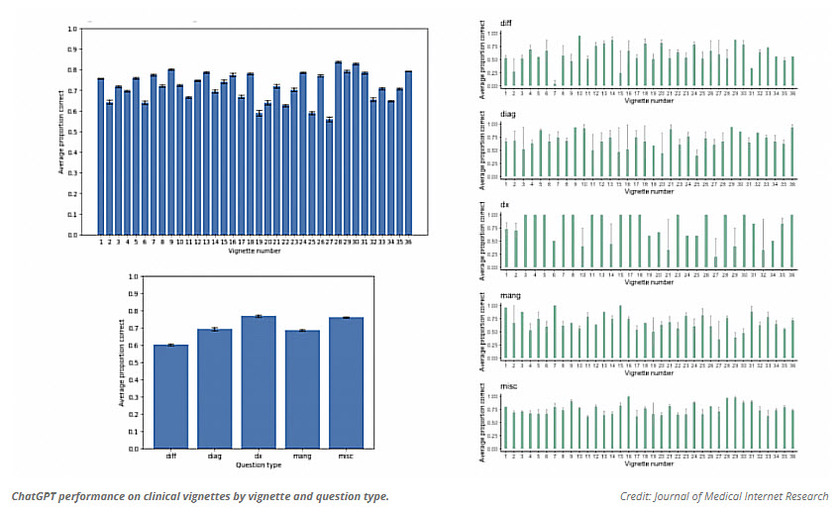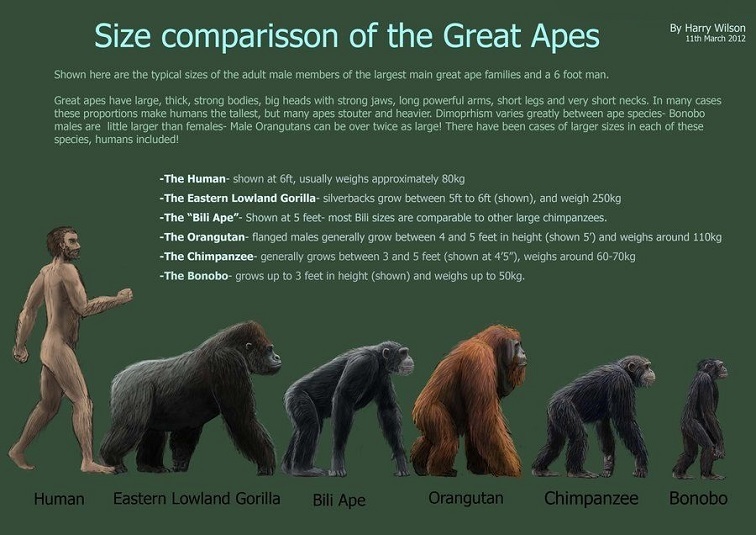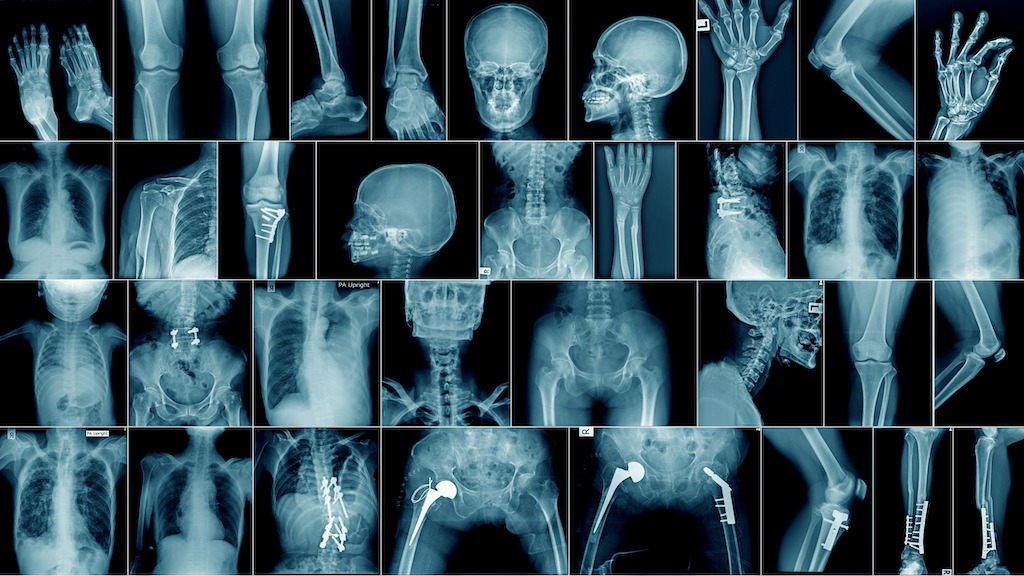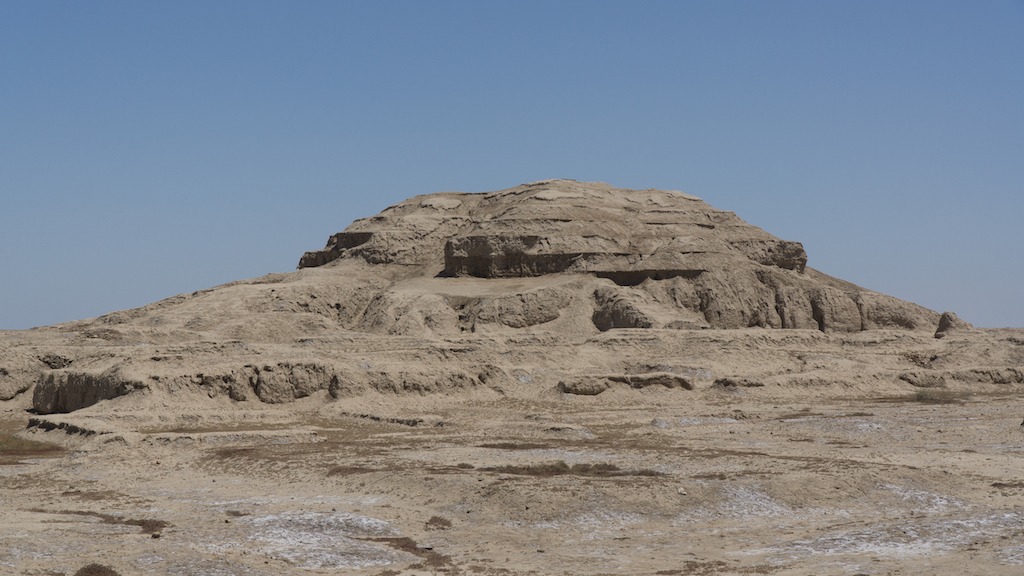Well we made it! For me I am glad it is finally Pet Friday! In the field I am in there are times you have to work through the night and the next day and that happened yesterday. I am glad they are not normal events for sure! In any event today we are going to look at the great apes that science puts Human's into as well. The following is from justfunfacts.com that covers the Great Apes generally.
"The great ape family is the smallest mammalian family with 7 living species, 6 of which live in the tropical forests of Africa and Asia. The seventh is Homo sapiens, our species.
This family include: gorillas, orangutans, chimpanzees, bonobos and humans.
With a common gene pool of between 97% and 98.5%, other great apes are our closest cousins in the animal kingdom.
In both Africa and Asia, great apes – bonobos, eastern and western gorillas, chimpanzees and orangutans – are rapidly losing much of their forest habitat to human activities such as agriculture, mining, and commercial logging.
With an estimated population of between 518,000 and 688,000 gorillas, chimpanzees and orangutans living in the wild, all Great Ape species are either Endangered or Critically Endangered on the IUCN Red List and CITES Appendix 1, indicating that they are at very high risk of extinction in the wild in the near future, probably within our own lifetime.
People often confuse apes and monkeys. Although there are a number of differences between apes and monkeys (apes have a longer lifespan, larger body size, larger brain-to-body size ratio, and higher intelligence) – the main difference is that monkeys have tails and apes do not have tails.
The smallest living species is the bonobo at 30–40 kilograms in weight, and the largest being the eastern gorillas, with males weighing 140–180 kilograms. In all great apes, the males are, on average, larger and stronger than the females, although the degree of sexual dimorphism varies greatly among species.
Although most living species are predominantly quadrupedal, they are all able to use their hands for gathering food or nesting materials, and, in some cases, for tool use.
All species are omnivorous, but chimpanzees and orangutans primarily eat fruit.
When gorillas run short of fruit at certain times of the year or in certain regions, they resort to eating shoots and leaves, often of bamboo, a type of grass.
Wild orangutans have more than 300 types of fruit available to them in their rain forest home.
Nest-building by great apes is now considered to be not just animal architecture, but as an important instance of tool use.
Gestation in great apes lasts 8–9 months, and results in the birth of a single offspring, or, rarely, twins. The young are born helpless, and require care for long periods of time.
Gorillas and chimpanzees live in family groups of around five to ten individuals, although much larger groups are sometimes noted.
Chimpanzees have complex social relationships. Apart from the dominant leader, there are also groups of individuals with some level of authority. An entire chimp community can sometimes have as many as 100 members.
Gorillas have various methods of communication, including some 25 distinct vocalisations.
Gorillas are considered highly intelligent. One famous captive-born individual, Koko, has been taught sign language since she was a year old. By the age of 40, she had a library of about 1,000 signs and could understand some 2,000 words of English.
There are two gorilla species: the eastern gorillas and the western gorillas. The western gorilla lives in west central Africa, while the eastern gorilla lives in east central Africa. They are separated by about 900 kilometers (560 miles) of Congo Basin forest.
There are also two species orangutan: Sumatran orangutan – lives on the island of Sumatra and Bornean orangutan — lives on the island of Borneo.
The word “orangutan” comes from the Malay language and means ‘person of the forest‘ – from the words ‘orang’ meaning people and ‘hutan’ meaning forest.
Orangutans are more solitary than other apes. Males are loners. As they move through the forest they make plenty of rumbling, howling calls to ensure that they stay out of each other’s way. The “long call” can be heard 2 kilometers (1.2 miles) away.
Researchers have identified at least 32 orangutan vocalizations. The “kiss-squeak” expresses excitement or fear.A “grumph” sounds like a belch and is a sign of disturbance or annoyance. Mothers warn their babies to stay close by making a soft, scraping sound.
Chimpanzees have been commonly stereotyped in popular culture, where they are most often cast in standardized roles as childlike companions, sidekicks or clowns.
Physically, bonobos resemble chimpanzees, a close relative. In fact, earlier scientists thought the bonobo was just a smaller version of the common chimpanzee and so the term “pygmy chimpanzee” was used.
Some great ape individuals are slow while others are brilliant. The range of intelligence of all great apes varies, just as ours does.
Some scientists believe that bonobos are the most intelligent of the primates (other than humans, of course!). Maybe that’s because they share many of our human behaviors, such as teaching their young social skills, using tools to get food, and working together for the good of the entire troop.
Humans have a large and highly developed prefrontal cortex, the region of the brain associated with higher cognition. They are intelligent, capable of episodic memory, have flexible facial expressions, self-awareness and a theory of mind. The human mind is capable of introspection, private thought, imagination, volition and forming views on existence. This has allowed great technological advancements and complex tool development possible through reason and the transmission of knowledge to future generations. Language, art and trade are defining characteristics of humans. Long-distance trade routes might have led to cultural explosions and resource distribution that gave humans an advantage over other similar species."
Well there you go and I hope you found something interesting in looking at the Great Apes. This did remind me of an older TV Cartoon the The Great Grape Ape Show back when I was a teenager in High School. Ahh the good old days of 25 cent a gallon for gas. Thou the gas lines was a pain and inflation.
Reference: https://justfunfacts.com/interesting-facts-about-great-apes/
I have lost a lot of faith with the Medical Community and the Governments over the last several years, but there are a few good things that can raise above the corruption and the pushing of drugs a new approach to heal people. The following is from www.gaia.com and written by Hunter Parsons that does not involve any drug or pushing an ineffective so called vaccine that the drug company is not held accountable in any way but they use sound! The use of sound can regrow bone tissue! Here is the story:
"The future of regenerative medicine could be found within sound healing by regrowing bone cells with sound waves.
The use of sound as a healing modality has an ancient tradition all over the world. The ancient Greeks used sound to cure mental disorders; Australian Aborigines reportedly use the didgeridoo to heal; and Tibetan or Himalayan singing bowls were, and still are, used for spiritual healing ceremonies.
Recently, a study showed an hour-long sound bowl meditation reduced anger, fatigue, anxiety, and ...
Not a fan of a Defense Agency studying Anti-Gravity and other Exotic Tech, but if the commercial world and make this technology cheap that will change our world yet again. The following is about three minute read and from www.gaia.com. The below was written by Hunter Parsons:
"Wormholes, invisibility cloaks, and anti-gravity — it’s not science fiction, it’s just some of the exotic things the U.S. government has been researching.
A massive document dump by the Defense Intelligence Agency shows some of the wild research projects the United States government was, at least, funding through the Advanced Aerospace Threat Identification Program known as AATIP.
And another lesser-known entity called the Advanced Aerospace Weapons System Application Program or AAWSAP
The Defense Intelligence Agency has recently released a large number of documents to different news outlets and individuals who have filed Freedom of Information Act requests.
Of particular interest are some 1,600 pages released to Vice News, which ...
As our technology gets better we are discovering more about the history of mankind and pushing the timeline back further and further. The following article is from www.gaia.com and written by Michael Chary that discusses this new find that changes the historical timeline:
"Over the past decade, there have been a number of archeological revelations pushing back the timeline of human evolution and our ancient ancestors’ various diasporas. Initially, these discoveries elicit some resistance as archeologists bemoan the daunting prospect of rewriting the history books, though once enough evidence is presented to established institutions, a new chronology becomes accepted.
But this really only pertains to the era of human development that predates civilization — the epochs of our past in which we were merely hunter-gatherers and nomads roaming the savannahs. Try challenging the consensus timeline of human civilization and it’s likely you’ll be met with derision and rigidity.
Conversely, someone of an alternative...
Not sure if you have heard of a show on YouTube called "The Why Files". If not you should check it out it is interesting and has some humor with it on different subjects. Last weeks was on a different theory how the Universe works and how main stream Science is attempting to shut it down like is always seems to do if it goes aguest some special interest. Today it is akin to what happened to those who questioned the Earth was the Center of the Universe that main stream so called Science all believed during the Renaissance period, They called any theory that the Earth was not the Center of the Universe misinformation. Does this sound familiar today? People laughed and mocked people like Leonardo da Vinci, Nicolaus Copernicus, Georg Purbach as crack-pots, conspiracy theorists, nut-jobs and they were suppressed and even imprisoned for their radical thoughts and observations. Again it sounds like today in so many ways. In any event this is a good one to ponder and see even if a bad idea ...
Seemingly chaotic systems like the weather and the financial markets are governed by the laws of chaos theory.
We all have heard about chaos theory, but if you have not or have forgotten what chaos theory is well here you go from interestingengineering.com:
"Chaos theory deals with dynamic systems, which are highly sensitive to initial conditions, making it almost impossible to track the resulting unpredictable behavior. Chaos theory seeks to find patterns in systems that appear random, such as weather, fluid turbulence, and the stock market.
Since the smallest of changes can lead to vastly different outcomes, the long-term behavior of chaotic systems is difficult to predict despite their inherently deterministic nature.
As Edward Lorenz, who first proposed what became commonly known as the Butterfly Effect, eloquently said, "Chaos: When the present determines the future, but the approximate present does not approximately determine the future.""
You may have heard the term about chaos theory as a butterfly flaps its wings in Brazil,...
I for one have lost trust in Medical Doctors due to COVID and reflection that they seem to push pills for everything and untested so called vaccines that is using a unproven technology because the Government and the Medical Boards of the State told them to. There are a very few exceptions. Thus they do not address the key problem just prescribe more and more pills to keep you alive an sick longer for them and Big Phama to profit from you. Will AI do any better? Well that depends on what was used for the training of AI. If it also pushes pills and vaccines without question then you have the same problems noted above. However, if the AI Training includes all possible forms of treatment and they zero in on the right issues for the true problem then there is possibilities they would be way better than most of the current Medical Doctors today.
The following is from an article from interestingengineering.com and written by Paul Ratner:
"A new study looks at how accurately AI can diagnose patients. We interview the researcher, who weighs in on AI's role ...





























